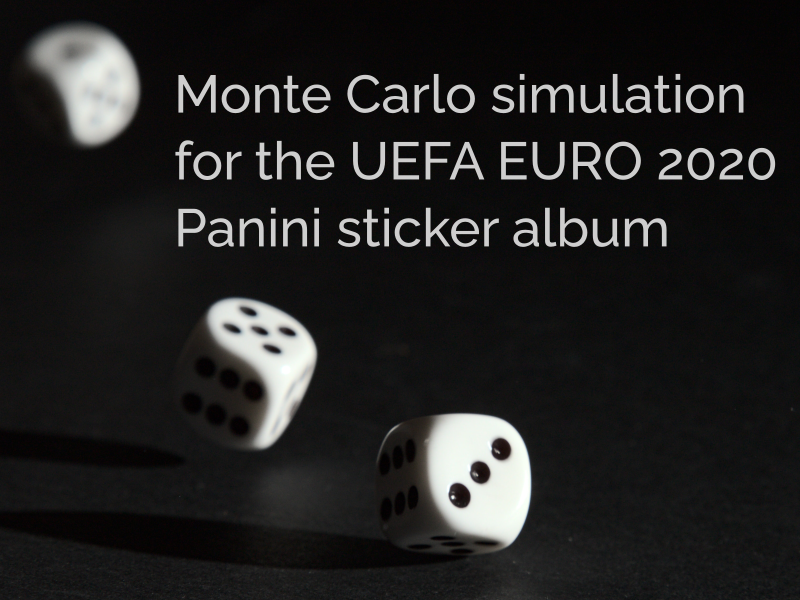About

I'm a passionate data scientist currently working at the Insel Data Science Center at the Inselspital in Bern. In this data-driven role, I help to improve the medicine and to tailor the treatment individually to patients. Through my parallel career in academia and industry, I developed a unique combination of analytical and technical skills to solve problems in a pragmatic and structured way.
- Citizenship: Swiss
- Domicile: Lucerne
- Age: 35
- Degree: PhD in Physics
Skills
In my physics studies I acquired in-depth knowledge of mathematics and statistics. The success of my PhD thesis was based on my strong know-how in model-based data analysis, regularization and bayesian statistics. Machine learning, especially deep learning, are indispensable tools in my everyday work. To share new insights, my strong presentational skills are essential. Besides my academic career, I was constantly working in an industrial company, where solving business-problems in a customer-oriented manner is an important skill.
Resume
Education
PhD in Physics
May 2017 - Aug 2020
University of Bern, Institute of Applied Physics
Investigated an ultrasound-based method for reconstructing the speed-of-sound in human tissue for diagnostic purposes
MSc in Physics
Sept 2015 - Mar 2017
University of Bern
Master thesis: Developed a method to accurately measure the refractive index of highly turbid media
Awarded with the faculty price 2017 for the best master thesis in physics
BSc in Physics with specialization in astronomy
Sept 2012 - Jul 2016
University of Bern
Federal vocational baccalaureate & additional qualifying examination
Aug 2009 - Aug 2012
BBZB Luzern & Kantonsschule Reussbühl
Apprenticeship as electrician
Jul 2003 - Aug 2007
Elektro Nottwil AG
Professional Experience
Data Scientist
Apr. 2022 - Present
Insel Data Scinece Center - Inselspital Bern
- Using Machine Learning for the analysis of data with the aim of quality assurance and improved diagnostic
- Advising researchers on data-related issues
- Extraction and provision of data for researchers
Research Associate - Machine Learning
Oct. 2021 - March 2022
Fernfachhochschule Schweiz (FFHS)
- Improved the accuracy of hints in online courses by 50% by implementing a new model
- Reduced computing time for predictions by a factor of 10 by deploying the model on a GPU-capable SWITCHengine.
- Support of technical infrastructure (GPU Cluster)
Postdoctoral Researcher
Aug. 2020 - Sept. 2021
University of Bern, Institute of Applied Physics
Research focus:
Improving the diagnostic accuracy of ultrasound-based speed-of-sound imaging
- Reducing noise-related artifacts using deep-learning methods
- Semantic segmentation of liver ultrasound images based on U-Net-like CNN
- Creating ethics applications and managing research projects
- Supervision of students
PLC Software Developer
Dec. 2008 - Aug. 2020
Gersag Krantechnik AG
- Developed PLC-Software for semi-automated industrial cranes
- Enabled more efficient commissioning and maintenance by developing a configuration and analysis tool for cranes
- Leading a team of four electricians (ad interim)
- Client consulting & preparation of offers
- Various electrical installations on cranes
Publications
Papers in Journals
Abstract
Computed ultrasound tomography in echo mode (CUTE) is a new ultrasound (US)-based medical imaging modality with promise for diagnosing various types of disease based on the tissue's speed of sound (SoS). It is developed for conventional pulse-echo US using handheld probes and can thus be implemented in state-of-the-art medical US systems. One promising application is the quantification of the liver fat fraction in fatty liver disease. So far, CUTE was demonstrated using linear array probes where the imaging depth is comparable to the aperture size. For liver imaging, however, convex probes are preferred since they provide a larger penetration depth and a wider view angle allowing to capture a large area of the liver. With the goal of liver imaging in mind, we adapt CUTE to convex probes, with a special focus on discussing strategies that make use of the convex geometry in order to make our implementation computationally efficient. We then demonstrate in an abdominal imaging phantom that accurate quantitative SoS using convex probes is feasible, in spite of the smaller aperture size in relation to the image area compared to linear arrays. A preliminary in vivo result of liver imaging confirms this outcome, but also indicates that deep quantitative imaging in the real liver can be more challenging, probably due to the increased complexity of the tissue compared to phantoms.
Read the paperAbstract
Computed ultrasound tomography in echo mode (CUTE) is a promising ultrasound (US) based multi-modal technique that allows to image the spatial distribution of speed of sound (SoS) inside tissue using hand-held pulse-echo US. It is based on measuring the phase shift of echoes when detected under varying steering angles. The SoS is then reconstructed using a regularized inversion of a forward model that describes the relation between the SoS and echo phase shift. Promising results were obtained in phantoms when using a Tikhonovtype regularization of the spatial gradient (SG) of SoS. In-vivo, however, clutter and aberration lead to an increased phase noise. In many subjects, this phase noise causes strong artifacts in the SoS image when using the SG regularization. To solve this shortcoming, we propose to use a Bayesian framework for the inverse calculation, which includes a priori statistical properties of the spatial distribution of the SoS to avoid noise-related artifacts in the SoS images. In this study, the a priori model is based on segmenting the B-Mode image. We show in a simulation and phantom study that this approach leads to SoS images that are much more stable against phase noise compared to the SG regularization. In a preliminary in-vivo study, a reproducibility in the range of 10 m/s was achieved when imaging the SoS of a volunteer’s liver from different scanning locations. These results demonstrate the diagnostic potential of CUTE for example for the staging of fatty liver disease.
Read the paperAbstract
Computed ultrasound tomography in echo mode (CUTE) allows determining the spatial distribution of speed-of-sound (SoS) inside tissue using handheld pulse-echo ultrasound (US). This technique is based on measuring thechanging phase of beamformed echoes obtained under varying transmit (Tx) and/or receive (Rx) steering angles.The SoS is reconstructed by inverting a forward model describing how the spatial distribution of SoS is related tothe spatial distribution of the echo phase shift. Thanks to the straight-ray approximation, this forward model islinear and can be inverted in real-time when implemented in a state-of-the art system. Here we demonstrate thatthe forward model must contain two features that were not taken into account so far: (a) the phase shift must bedetected between pairs of Tx and Rx angles that are centred around a set of common mid-angles, and (b) it mustaccount for an additional phase shift induced by the offset of the reconstructed position of echoes. In a phantomstudy mimicking hepatic and cancer imaging, we show that both features are required to accurately predict echophase shift among different phantom geometries, and that substantially improved quantitative SoS images areobtained compared to the model that has been used so far. The importance of the new model is corroborated by apreliminary volunteer result.
Read the paperJoI, 2018
Abstract
Handheld imaging of the tissue’s speed-of-sound (SoS) is a promising multimodal addition to diagnostic ultrasonography for the examination of tissue composition. Computed ultrasound tomography in echo mode (CUTE) probes the spatial distribution of SoS, conventionally via scanning the tissue under a varying angle of ultrasound transmission, and quantifying—in a spatially resolved way—phase variations of the beamformed echoes. So far, this technique is not applicable to imaging the lumen of vessels, where blood flow and tissue clutter inhibit phase tracking of the blood echoes. With the goal to enable the assessment of atherosclerotic plaque composition inside the carotid artery, we propose two modifications to CUTE: (a) use receive (Rx) beam-steering as opposed to transmit (Tx) beam-steering to increase acquisition speed and to reduce flow-related phase decorrelation, and (b) conduct pairwise subtraction of data obtained from repetitions of the scan sequence, to highlight blood echoes relative to static echo clutter and thus enable the phase tracking of blood echoes. These modifications were tested in a phantom study, where the echogenicity of the vessel lumen was chosen to be similar to the one of the background medium, which allows a direct comparison of SoS images obtained with the different techniques. Our results demonstrate that the combination of Rx-steering with the subtraction technique results in an SoS image of the same quality as obtained with conventional Tx-steering. Together with the improved acquisition speed, this makes the proposed technique a key step towards successful imaging of the SoS inside the carotid artery.
Read the paperTheses
Abstract
According to the New England Journal of Medicine, medical imaging is one of the most important advances in the history of medicine. Ultrasound is a well-established imaging modality that has various distinct advantages such as real-time feedback, portability and the use of harmless, non-ionizing radiation. Besides the many advantages, a main drawback is its limitation to the gray scale contrast that makes the interpretation of ultrasound images not quantitative and the outcome very much depends on the operator’s experience. To overcome this shortcoming, research in recent decades was directed towards novel ultrasound based modalities that complement classical ultrasound with additional structural and functional information. One promising modality is speed-of-sound imaging, which is able to provide complementary information about the tissues physical properties, such as the quantification of the fat content inside the liver. The goal of my thesis was to improve speed-of-sound imaging towards clinical applicability. I achieved this by implementing a physically correct forward model, which relates the measurement quantity to the speed-of-sound. Further, I introduced a Bayesian framework for solving the inverse problem to reduce noise-related artifacts. The advances made during the work of my doctoral dissertation have led to quantitative and robust in-vivo speed-of-sound images and paved the way for clinical pilot studies that investigate the clinical applicability of speed-of-sound imaging.
Read the thesisMcS, 2017
Abstract
Determining the complex refractive index of highly scattering media by means of applying Fresnel's equations can be challenging. This is attributable to three main difficulties: First, the directly specularly reflected beam needs to be distinguished from the backscattered light. Secondly, the angle between the media's surface normal and the illumination beam's propagation direction has to be measured in a precise manner in order to achieve reasonable results. Finally, the media's surface roughness has a big impact on the kind of reflection and therefore, in order to apply Fresnel's equations, this issue needs to be taken into account. In this Master thesis, a compact and inexpensive imaging system was developed to circumvent this issues. An ellipsometry based set-up was built and optimized in order to be able to measure the refractive index of highly scattering media independent of the illumination beam's intensity and angle of incidence. The applicability thereof has been ascertained with experiments on highly concentrated colloidal latex suspensions. The real part of the refractive index was measured with a deviation from literature of only a few tenth of a percent over a wide range of particle concentrations. In a second step, the effect of surface roughness was investigated by performing Monte Carlo simulations. These simulations revealed that the developed data analysis is promising to give reliable results in real measurements.
Read the thesis


